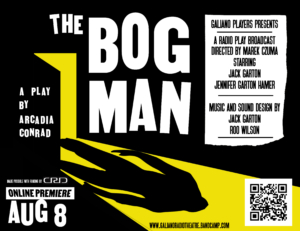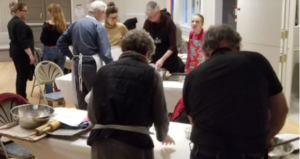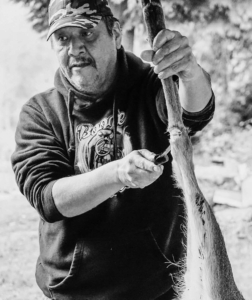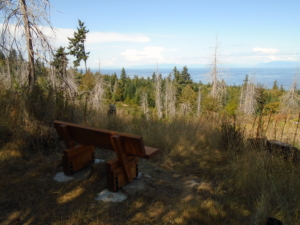Trailer for “The Bog Man”

By Alison Colwell|2021-08-03T14:35:30-07:00August 3rd, 2021|Categories: Galiano Players|0 Comments

By Alison Colwell|2022-03-15T21:49:06-07:00April 17th, 2021|Categories: Food Program|0 Comments
This report for the CRD’s Community Economic Sustainability Commission reviews two recent local GCFP projects through a regional lens, and identifies which issues raised on Galiano might resonate on other Southern Gulf Islands, and also which might best lend themselves to being addressed at a regional level. The first project was a pair of surveys of Galiano growers and restaurants and grocery stores to better understand the impact of COVID-19 on Galiano’s food system. The second project was an event that was organized to address some of the needs that were identified via the Covid Impact surveys, called Meet Your Maker, which was an opportunity for Galiano farmers, fishers, foragers, markets, restaurants and grocery stores to come together, make connections, discover opportunities and find new partners. The report then makes recommendations for ways to apply what was learned throughout the region.
By Alison Colwell|2022-03-15T23:54:04-07:00April 17th, 2021|Categories: Food Program, Growing (Garlic Co-op, Greenhouse, Gleaning Project)|0 Comments
The Meet Your Maker event was held in January of 2021. It was an opportunity for Galiano farmers, fishers, foragers, markets, restaurants and grocery stores to come together, make connections, discover opportunities and find new partners. In attendance were 15 growers, 3 grocers, 3 farmers’ market reps and 9 restaurateurs. This report shares the outline of the event, gives an overview and highlights key takeaways, including next steps to address some of the issues raised.
By Alison Colwell|2022-03-15T23:54:12-07:00February 14th, 2021|Categories: Food Program, Workshops|0 Comments

January 27th, 2019
Residents gathered to share perogy stories, songs, and traditional recipes, and then shared in a feast. It was an immersive experience in Ukrainian culture and cuisine. We pinched, cooked and ate together as our workshop presenters shared stories and songs from this rich traditional culture.
By Alison Colwell|2020-05-11T23:32:39-07:00April 12th, 2020|Categories: Club News, Club Parks|0 Comments
From the Galiano Club during the coronavirus pandemic:
The parklands we manage — the Bluffs, Mt Galiano, the Community Forest — remain open. Fresh air and exercise are essential elements in maintaining good physical and mental health; this is most especially vital just now. So, we want our hiking trails, our parks, to be kept available for our neighbours to use. But, while using the trails and the vehicle parking areas it is most important to remember the current pandemic situation, the precautions outlined by our local health experts — most especially the social distancing. And, to wash your hands well before & after each hike/walk.
The staff at the Galiano Health Care Centre and those with the Galiano Emergency Program all agree with this decision by the Galiano Club Board. But, they caution that the board may need to revisit this decision as needed.
By Alison Colwell|2020-07-01T18:54:51-07:00April 12th, 2020|Categories: Food Program, Nettlefest|0 Comments
by Alison Colwell
Right now, getting outside could offer some fresh air and needed distraction. Just remember your social distancing!
Foraging wild food is one of our most primal activities, up there with discovering who left those tracks in the sand and learning how to build a fire. And if you can tell the difference between kale and lettuce, you will be able to identify plants and mushrooms in the wild. Foraging can be as simple as picking blackberries at the edge of the road or hiking through Bluffs Park looking for mushrooms. The more we use wild spaces to explore and forage in, the more connections we develop to our foods and the place we call home.
Come spring, stinging nettles are among the first edible plants to burst from the ground in the Galiano, then miner’s lettuce, blackberries in the late summer and chanterelle mushrooms in the fall, foraging oysters from Retreat Cove in the winter. Food surrounds us on our small island, if we know where to look. Once I learned to tap maple trees, boiling down the sap, making enough syrup for one Sunday breakfast.
Not only are foraged plants tasty, free, fresh and a good way to connect you to the place we live, they can also be good for you. Stinging nettles are high in vitamin C and calcium. Food is a necessity and also the glue that binds our community together, one neighbour to the next. So get a good book, or better, go out with an experienced friend. We all need to learn, and in learning we can save both the food and the environment it lives in, and preserve the knowledge that teaches us what to eat: grand fir tea, sword fern roots, thistle stems, nori, salmonberry, Oregon grape, to start.
Picking plants should be done in moderation. It is good to leave a bit behind for birds, deer, and slugs to feed on. Sustainable harvesting is important to remember to prevent inadvertent over-picking. There may be a lot of a plant growing in one area, but this doesn’t mean that it is abundant everywhere. Compensate for what you harvest by giving back to the land, by spreading seeds, removing invasive species and reintroducing natives, all while minimizing your footprint to maintain the health of the ecosystem. And never ever take more than you can use.
(At time of printing, we’re expecting to postpone the potluck and cooking class portions of Nettlefest for this year. Stay tuned to our newsletter for more information.)
By Alison Colwell|2022-03-20T21:08:12-07:00February 20th, 2020|Categories: Food Bank, Food Program|0 Comments
(Please no dented cans or expired food.)
By Alison Colwell|2020-04-14T17:18:57-07:00January 15th, 2020|Categories: Food Program|0 Comments

Photo: Chris Heffley
Linda Geggie is the executive director of the Capital Region Food and Agriculture Initiatives Roundtable. Below is an excerpt from an article she wrote for the Saanich News, published in October.
Young spokespeople like Greta Thunberg and other young leaders across the globe have inspired people to bring more visibility to the growing concerns being raised by climate science. Often overlooked in climate conversations is the role that our food plays. Growing and distributing food globally is estimated to contribute to over one third of human greenhouse gas (GHG) emissions. The United Nations International Panel on Climate Change (IPCC) points to agriculture as being responsible for 40 per cent of the Methane released into the atmosphere. This is important because as far as GHG’s go, Methane is a major bad ass gas, being 21 times more impactful than Co2 in its action to absorb energy in the atmosphere and cause temperature rise. We are learning the impacts of the global food system on our resources are vast.
The UN IPCC’s report published in August of this year digs deep into the science of what is happening and provides some important strategies that could be put in place immediately to work to turn things around. The report also determines that “People currently use one quarter to one third of land’s potential net primary production for food, feed, fiber, timber and energy.” That is all for us. It does not include meeting the needs of the other 8 million species on the planet.
As a citizen, the choices we make about what we eat are complex. Choices are associated with our income, culture, mobility, health, our food skills and other factors. Climate Connection in Manitoba provides some helpful guidelines they call the Rule of Five Ns. While it is not available to everyone, every time, it is a great guide for working towards a climate-friendly diet:
The Food Program supports local meat choices, in part because they provide an opportunity to reduce our reliance on industrial meat products, and the greenhouse gas emissions associated with their production and transport.
Under that umbrella, the Food Program partnered with the Galiano Conservancy Association, The Access to Media Education Society, the Community Resource Centre, and members of the Penelakut Island community to present the Feeding the People Butchering and Sausage Making workshop in December. Approximately 20 participants from Galiano and Mayne came together to learn how to skin, debone, cube, grind and bag venison. We worked together as a group: in Hul’qumi’num, nuts’a’maat – working together with one heart and one mind. Each participant took meat home for their freezer, and a very generous portion was also donated to the Food Program for distribution to families in need.
By Alison Colwell|2019-11-11T12:51:37-08:00November 11th, 2019|Categories: Club Programs, Galiano Players|0 Comments
Performances on:
Friday, November 29th at 7pm
Saturday, November 30th at 2pm and 7pm
Sunday, December 1st at 2pm
Tickets $20 (Kids under 12 $10)
By Alison Colwell|2019-10-24T13:45:55-07:00October 24th, 2019|Categories: Club Programs|0 Comments
 Volunteers Needed!!! There will be a work party on Saturday, October 26 to relocate the Shorepine trail in the Community Forest. We will also be doing some trail maintenance on that trail. Please join us if you can.
Volunteers Needed!!! There will be a work party on Saturday, October 26 to relocate the Shorepine trail in the Community Forest. We will also be doing some trail maintenance on that trail. Please join us if you can.
Meet at 10am on the 26th, on Georgia View extension where the trail meets the end of Sticks Allison road. Bring hand tools and gloves.